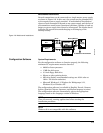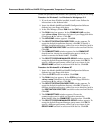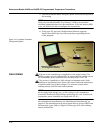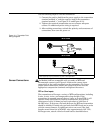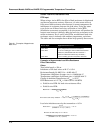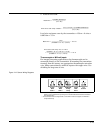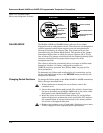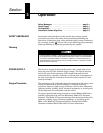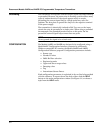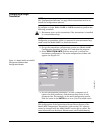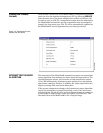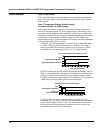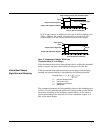
Rosemount Models 244EH and 244ER PC-Programmable Temperature Transmitters
2-16
Figure 2-13. Transmitter Power,
Sensor, and Configuration Terminals
FAILURE MODE The Models 244EH and 244ER features software driven alarm
diagnostics and an independent circuit. These features are designed to
provide separate backup alarm output in case the microprocessor,
electronics, hardware, or software fails. The alarm levels are user
selectable using the Failure Mode Switch. The position of the jumper
determines the direction in which the output is driven (HI or LO) in
case of alarm. The jumper switch feeds into the Digital-to-Analog (D/A)
converter, which drives the proper alarm output even if the
microprocessor fails.
The values to which the transmitter drives its output in failure mode
depend on whether it is factory configured to standard or
NAMUR-compliant operation. See “Failure Mode” on page A-2 for
these parameters.
To determine the failure mode configuration of a transmitter, review
the low and high alarm levels on the SERVICE menu provided by the
configuration software.
Changing Switch Positions To change the failure mode on the Model 244EH or 244ER transmitter,
follow the steps described below.
1. If the transmitter is mounted in an enclosure, remove the
enclosure cover.
2. Locate the orange failure mode switch. The switch is located near
the power terminals on the Model 244EH and in the center of the
front panel on the Model 244ER (see Figure 2-13).
3. Move the switch to the desired alarm setting. To set the failure
mode to high alarm, position the switch toward the “HI” mark on
the terminal block; to set the failure mode to low alarm, position
the switch in the opposite direction.
4. Replace the enclosure cover (if applicable). Enclosure covers must
be fully engaged to meet explosion-proof requirements.
Model 244EH Model 244ER
1234
Failure Mode
Switch
Power Terminal
Sensor
Terminals
Configuration
Terminals
244-1260B02D, 1105E01B
Failure Mode Switch
Sensor Terminal
Power/Configuration
Terminals




